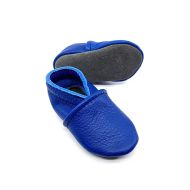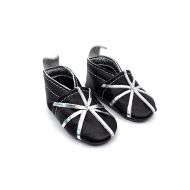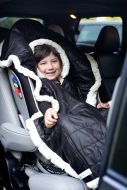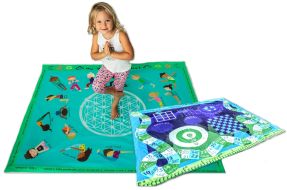
Children begin to suck their thumb (or fingers) for their own reasons. Mostly, they find it soothing or comforting to do so. The action of thumb-sucking mimics that of suckling when infants breastfeed. Kids may resort to sucking their thumb due to separation anxiety or something else. If you are at loggerheads about how to stop your child from sucking thumb then reach out to your pediatrician for expert help.
Look for a local pediatrician if you already don’t have one. Be willing to change your doctor if your current pediatrician is unwilling to address all your concerns. Use easy online searches to find a new doctor. Use location search keywords such as best pediatrician in Jacksonville FL. Use a location as per your requirements.
Why thumb-sucking is a problem?
Children who suck thumb for prolonged periods may develop an overbite. They may then require treatment at a later stage to correct their teeth. If kids stop sucking their thumb before the growth of permanent teeth; the problem may be less severe. Constant sucking of thumbs or fingers can alter the shape of the mouth; causing dental problems later.
The skin of the thumb may begin to tear up due to the constant sucking action. The skin may even bleed; causing further problems.
Children who suck thumb or fingers are also making it easier for germs to enter their mouths; risking infections.
If thumb-sucking is allowed for prolonged periods; the child may be prone to greater anxiety. As children get older and enter their school years, they may become subject to bullying due to their habits. If they continue to suck their thumb in hiding; this may further increase their anxiety.
How a pediatrician can help?
Pediatricians oversee common issues pertaining to children on a daily basis. They are experts in their fields and can address each of their patient’s concerns as per their own unique needs.
. You may have tried home remedies or reward-punishment tactics to no avail. Your child continues to suck his or her thumb. Before the problem accelerates, it is best to consult your child’s doctor for the best possible solutions.
. The pediatrician will try to assess the problem and find what may be causing your child to suck the thumb or fingers. Older children may be experiencing separation anxiety once they begin school or have confidence issues. Sucking the thumb acts as a pacifier and provides temporary comfort to the child. The pediatrician may ask you questions to find the causes. If your child can speak and is willing to talk, the doctor may try asking questions to him or her. Such assessments can help the doctor to treat your child’s anxiety before it becomes severe.
. The pediatrician may recommend tried and tested tactics to counter the problem. The reward method is a common solution to stop a child from sucking the thumb. The idea is to reward your child every time he or she stops sucking the thumb upon your insistence. You can reward the child with some playtime, a quick story, a sticker, or anything that works for you. The sticker method works with children quite well. You can buy colorful stickers and give one to your child as a reward. You can put them up on a sheet and put the sheet on the fridge or in the child’s room. You can slowly extend the reward time to 5 hours or a day. The rewards can vary; such as a park visit in the evening if your child refrains from sucking the thumb for the entire day!
. The pediatrician can recommend dentists if your child requires emergency dental treatment due to constant thumb-sucking. If the skin rashes are bad, the doctor can provide treatment to avoid infections. If your child’s anxiety is severe, the pediatrician may refer you to another expert.
. The pediatrician can also soothe your worries about your child’s thumb-sucking habit. Oftentimes; these problems take care of themselves. If the doctor feels you have nothing to worry about post your child’s examination; you can take it easy.
In any case, a good pediatrician is always around to help their patients.

Children undergo a phase of rapid development in the initial few years of their life, and so do their feet. They learn to crawl and stand while taking support from any nearby object. Slowly they start walking on their tiny little feet.
Walking barefoot in the safe, comfortable environment of your home is alright. However, your kids’ feet will need protection with good-quality shoes on uneven surfaces outside your home. The footwear for babies also ensures that they remain warm and comfortable.
However, choosing shoes for infants can be a daunting task. You will be inclined to buy something completely based on its color and cute design. However, that is not enough when it comes to your baby’s feet.
You need to ensure that you buy the right shoes for your child’s comfort and proper growth. Here are a few tips that can help you choose the best infant shoes for their first steps.
1. Right fit
When choosing shoes for infants it is essential to pay adequate attention to their fit. Measure the length and width of your baby’s feet carefully to ensure a comfortable fit.
The shoes should allow some growing space for your little one’s feet. However, they should not be loose enough to fall off their feet. A distance of 12 mm to 15 mm is advisable between the big toes and the front of the shoes.
Shoes that are too tight can make your kids uncomfortable. Also, the pain may cause negative feedback when walking and can demotivate them. The baby may bend its feet while walking to avoid pain. This can result in improper growth of their bones.
The nerve endings in a baby’s foot are not completely developed. So, your baby may not feel an uncomfortable pain at all or may find it difficult to communicate it. Hence, the responsibility of choosing the best fit for the footwear falls on your shoulder.
An improper fit can also increase the risk of falls and injury. Hence, it is essential to choose the right shoes for infants.
2. Material
The material of the shoe plays a critical role. You should choose a breathable inner lining to ensure comfort and avoid infections. Avoid choosing synthetic material for your child’s shoes. Leather with micro holes and canvas can be a suitable alternative for the outer part of the shoes.
Soft material follows the natural contour of your child’s feet and ensures comfort and easy movement. The soles should be anti-skid and should ensure a nice grip while walking.
3. Regular refitting
The children’s feet are growing at a fast pace up to the age of two years. Hence, it is essential to check the shoes for regular refitting once every six weeks.
Try to feel your baby’s toes when they have the shoes on. If you feel that the shoes do not have enough wiggle room, you should start looking for a new pair.
4. Shoe design
The shoes for infants should be lightweight and should provide them with comfort, support, and flexibility. However, there is no need for any arch supports for your baby’s feet.
Most babies have flat feet and develop the arch slowly as they start walking. You should also avoid high ankle shoes as they can increase the chances of injury.
5. Fastener
Shoes for infants come with different fastenings like Velcro, buckle, and laces. The fastening should ensure a secure foot position in the shoes. Also, they should be adjustable to create a perfect fit. Children are known for their impatience. Hence the fastener should allow the shoes to be put on and taken off easily.
Velcro is one of the most convenient options for kids’ shoes. However, this also means that your child can easily unfasten the footwear. If your baby prefers being barefoot, they may wriggle out of the shoes or kick them off.
In such a case, a buckle strap or lace could be a suitable alternative.
These are some essential factors you must consider when choosing the best infant shoes for their first steps.

Seeing your infant girl grow is an exhilarating experience. They learn to roll over, start crawling and slowly start waking with the support of a wall or any other adjacent object. Their tiny feet go through so much and are constantly evolving. Hence, there is a need for a comfortable pair of shoes that ensures comfort, protection, and easy movement.
Choosing infant shoes for girl can be quite confusing. There are so many options available for infant girls. However, the first factor that you should consider is the fit of the shoe. If the shoe fits, there are numerous designs that you can choose from.
To ensure that the shoes fit your little one’s feet perfectly, you need to take measurements of the length and width of their foot. You can also take professional help to ensure a perfect fit.
When shopping online, you can follow the sizing guide and other information on the website to ensure a perfect fit. Some sites have videos that will help you take the perfect measurement and find the correct size of infant shoes for girls.
Since their feet are still growing, you need to ensure that there is some additional space. However, the shoe should not be big or loose to cause discomfort.
Some of the signs that indicate that a shoe may not be the perfect fit for your baby are:
• Redness, after you take the shoes off.
• Too much pressure on the shoe seems.
• Feet bulging out of the shoes.
• The toes are bending upwards.
• The toes are getting squished.
• The big toe is touching the front of the shoe.
• The shoes are slipping off their feet.
These are some of the signs that indicate an ill-fitting shoe. Also, the shoes will need to be refitted every six weeks to eight weeks. If you see any of the above signs, it is time to replace your baby’s shoes.
However, if the shoe fits, you can choose from a variety of styles and designs. Here are a few ideas for infant girl shoes that you can choose from.
1. Booties
Booties for infant girls are available in different colors, materials, and designs. They are soft boot-like shoes and can be made of leather, canvas, or other material. Booties can also be thick and knitted and ensure warmth and comfort for your infant girls’ feet.
2. Laced boots
They are one of the most common infant shoes for girls. Laced boots are available in different colors and designs.
It gives your little girl’s feet a charming look and ensures a snug and secure fit. However, it can be difficult to tie the tiny strings, especially if your baby is impatient.
3. Velcro closure sandals
Sandals with Velcro closure can be put on and off quickly. they are comfortable to wear and can be adjusted as per your child’s feet to ensure a snug fit.
They are so easy to put on that your child may learn to do it themselves in no time. However, this also means that they can easily unfasten it and kick off the shoes.
4. Slip-on
Infant shoes for girls are also available as a slip-on. These shoes look cute, and as the name suggests, they can be slipped on easily.
However, they may not be a suitable shoe option when your little girl starts walking. The shoes can easily slip off out of their feet, and they may need to bend their toes to keep the shoes on. This can lead to incorrect posture and can stunt bone development.
5. Buckle strap shoes.
Another infant shoe for girls is buckle strap shoes. These shoes come in various designs and colors. However, they are not very easy to put on and take off.
Buckle strap shoes may not be suitable if your baby has just started walking. The shoes do not provide much support to the growing feet of your little girl.
These are some of the ideas for infant shoes for girls. You can choose one as per your preference, only after ensuring that they fit perfectly.

Car seats for babies offer them much-needed protection when they travel. But not many parents are aware that car seats and thick winter coats do not go hand in hand. Putting on a winter coat for your baby and placing them in the car seat is no option to provide them with a safe journey.
Why do car seats and winter coats don’t mix?
Winter coats add unwanted space when to car seat harnesses. When you put the child in a winter coat and strap them, they are not tight and safe as expected. The extra space added because of the coat between the harness disables the safety effectiveness. This looseness in the harness straps can increase the risk of collision under any unfortunate accidents.
When planning for a safe journey for your baby in winter, do
• Dress your baby in thin fleece layers and use car seat coats.
• Make sure the chest clip is at the armpit level.
• Tighten the harness so that there is no twist or fold.
Why should you use car seat coats?
Car seat coats are scientifically designed to ensure complete protection for babies. They are tested in dedicated facilities and undergo rigorous testing for compliance and standards. Studies performed by the American Academy of Pediatrics confirm that car seat coats offer better security than winter coats for babies.
The benefits of choosing car seat coats extend beyond safety provisions. They allow kids to move comfortably and grow with them. Car seat coats are durable and easy to maintain.
Car coat seats are available in plenty of designs and themes. Thus, your little ones can no longer wait to wear one and set on a stylish and safe journey. Mothers are finding them as the best option to carry their babies safely during car journeys.
Below are four awesome car seat coat solutions for babies:
Car Seat Poncho Fawn with Ears Reversible with Pocket:
It is a reversible car seat poncho with a quirky print of the cutest fawn with ears. It has provision for two pockets for your little one to keep their hands warm. Add a dose of fun to safety for your baby with this poncho.
Need a style change to suit the mood? Just reverse the poncho, and you can have a solid color that sets the necessary mood.
Car Seat Poncho – Car Crash Tested and CPSC Compliant – Florals & Mermaids:
This car seat poncho is specially crafted for little mermaids who love to flaunt floral prints. Printed on both sides, you can reverse it as per the style choice of your baby. With mermaids on one side and a lovely flower print on the other, your cute one will love this car seat poncho.
You can place this poncho on the seat back so it doesn’t occupy space when your baby is in a stroller or car seat.
Car Seat Poncho – Halloween Costume – Dino Spikes:
Who said car seat ponchos can’t add fun quotient? Here is a Halloween-themed car seat poncho with dino spikes! A perfect match for your naught one to thrill his friends and siblings on Halloween and travel time. It is easy to buckle up your baby with this poncho in the car seat and get set to go on a journey.
Besides, it offers enough room for your baby to move and adheres to car safety standards. With inside print of dinosaurs, your little one will want to wear this funky car seat poncho without any trouble.
Car Seat Poncho – Car Crash Tested and CPSC Compliant – Cupcakes:
Calling all cutie pies to wear this adorable car seat poncho for a stylish and safe journey. With cute cupcakes printed all over, this car seat coat is a must for your little fashionista!
It also offers a vibrant pink shade on reversing, which means it suits perfectly for any occasion your little one wants to be a part of.
Conclusion
Studies confirm that winter coats are dangerous for little ones when in a car seat. Switching to car seat coats ensures safety besides boosting their fashion statement. Grab a car seat poncho today for your little one and gift them both fun and safety.

Parents of toddlers often face various challenges. In various areas such as food, hygiene, sleep, health, and nutrition, toddlers demand extra attention from parents. It is a common experience that parents of toddlers find it demanding to put their kids to bed.
Various issues such as growth disorders, ear infections, colic, stomach pain, insecurity, and unexplained reasons can create sleep problems for toddlers.
Fortunately, technology and manufacturing advancements show a ray of hope for parents to overcome such hassles. Weighted blankets for toddlers are scientifically designed to aid children’s sleep. This post intends to discuss four main things parents need to know about weighted blankets.
#1: Getting familiar
Weighted blankets are coverings specially designed for promoting healthy sleep to children. They consist of layers filled with child-friendly fillings to impart pressure and are scientifically backed with the Deep Touch Pressure principle.
Weighted blankets are one type of pressure-based wear to promote soothing and comfort to kids.
That said, there are varying opinions on the usage of weighted blankets. While some prefer it as a natural sleep inducer, there are also opinions that these blankets might suffocate kids. Some doctors believe that these blankets do not encourage the natural movement of the child in sleep.
However, with a proper understanding of the selection and usage, weighted blankets can benefit kids. Plus, there must always be adult supervision like for any other child product.
#2: Benefits
Catering to the needs of children and elders, weighted blankets suit children of above 2 years. They are also proven to help elders suffering from memory disorders and insecurity.
Researchers find them especially useful for children suffering from growth disorders such as autism, attention deficiency, trauma, sensory processing, and obsessiveness. They also help promote a sense of security in children who change their living conditions.
The benefits of weighted blankets for toddlers are as below:
• Soothes and calms kids who are hyperactive and display overexcitement.
• Promotes sleep hormones – serotonin and melatonin through natural pressure application on the body.
• Alleviates anxiety and stress in children by triggering feel-good hormones.
• Imparts assurance and warmth to elders suffering from Alzheimer’s, post-cancer side effects, Parkinson’s, and anxiety.
#3: Availability
Thanks to the creativity of makers, a wide range of weighted blankets are available. Ranging from nature designs to child-friendly themes, parents can choose the ones their toddlers love.
Some of the best sellers in the range of weighted blankets for kids are:
• Yoga kids pose
• Engaging games
• Maps with states and capitals
• Space and adventure prints
• Dinosaur and extinct species
• Nature and floral prints
Besides, weighted blankets are available in different variants. Nighttime blankets, daytime wear, travel, etc. It makes it super easy to choose one for your kid that will turn out to be their favorite mate!
#4: Care and usage
Weighted blankets differ from regular blankets in their design. Thus, children might need some time to get accustomed to them, maybe a day or two.
There is plenty of choices available in the fabric used for weighted blankets. Pick a blanket that suits your local climate and kid’s body nature.
Like for every other kid’s product, weighted blankets must adhere to safety regulations too. Ensure the manufacturer assures quality and safety adherence.
When introducing the blankets, seek your toddler’s feedback. Check their comfort levels and consider their experience of using it for the first time.
Pediatricians suggest that the weight of the kid’s blankets must be in the range of 10-11% of their body weight. Hence, check the weight of the blanket in the product details to choose a suitable one according to your toddler’s weight.
When it comes to choosing products for kids, parents always vouch for reviews. The same applies to these blankets too. Check parents’ reviews before you settle with one. They can give you an exact peek into the product quality, real-time experience of their kids with the blanket, etc.
Summary
Sleep challenges with toddlers are testing for parents too. Weighted blankets can help solve them and provide sleep naturally to kids. Seek the professional advice of a pediatrician or an occupational therapist to decide about buying the right blanket for your child.













